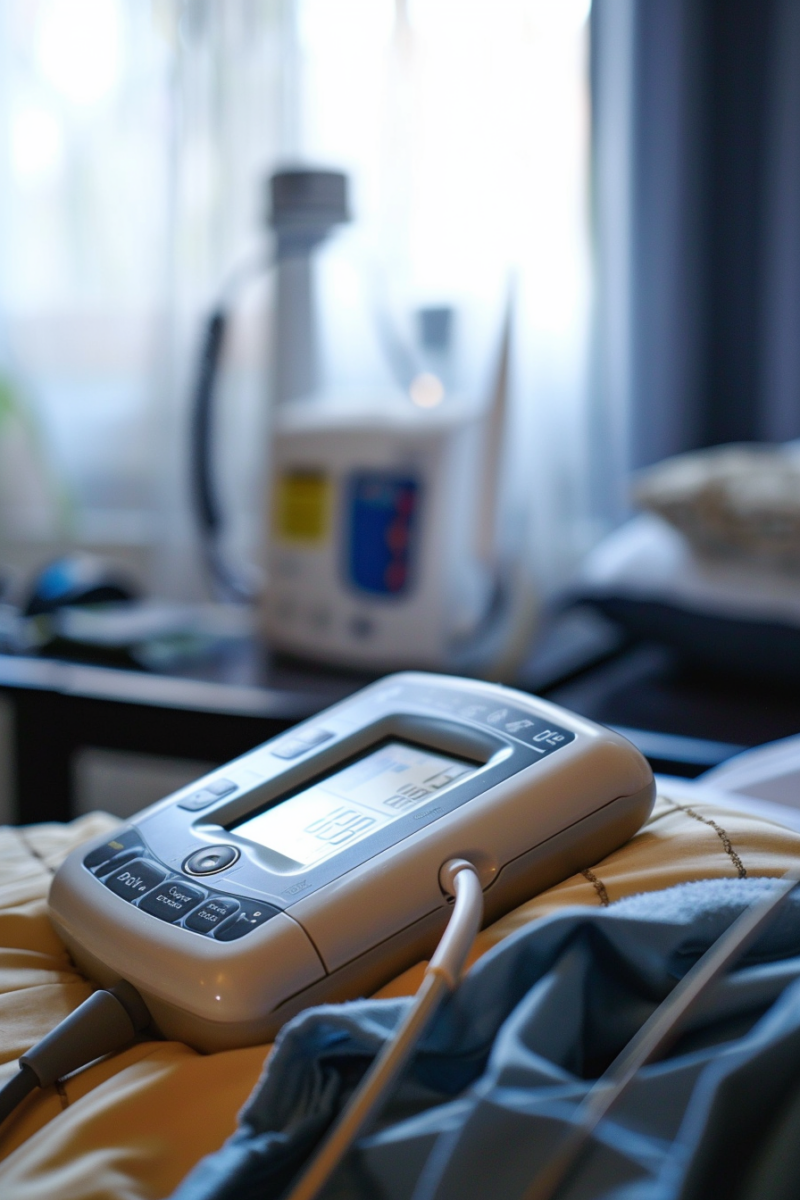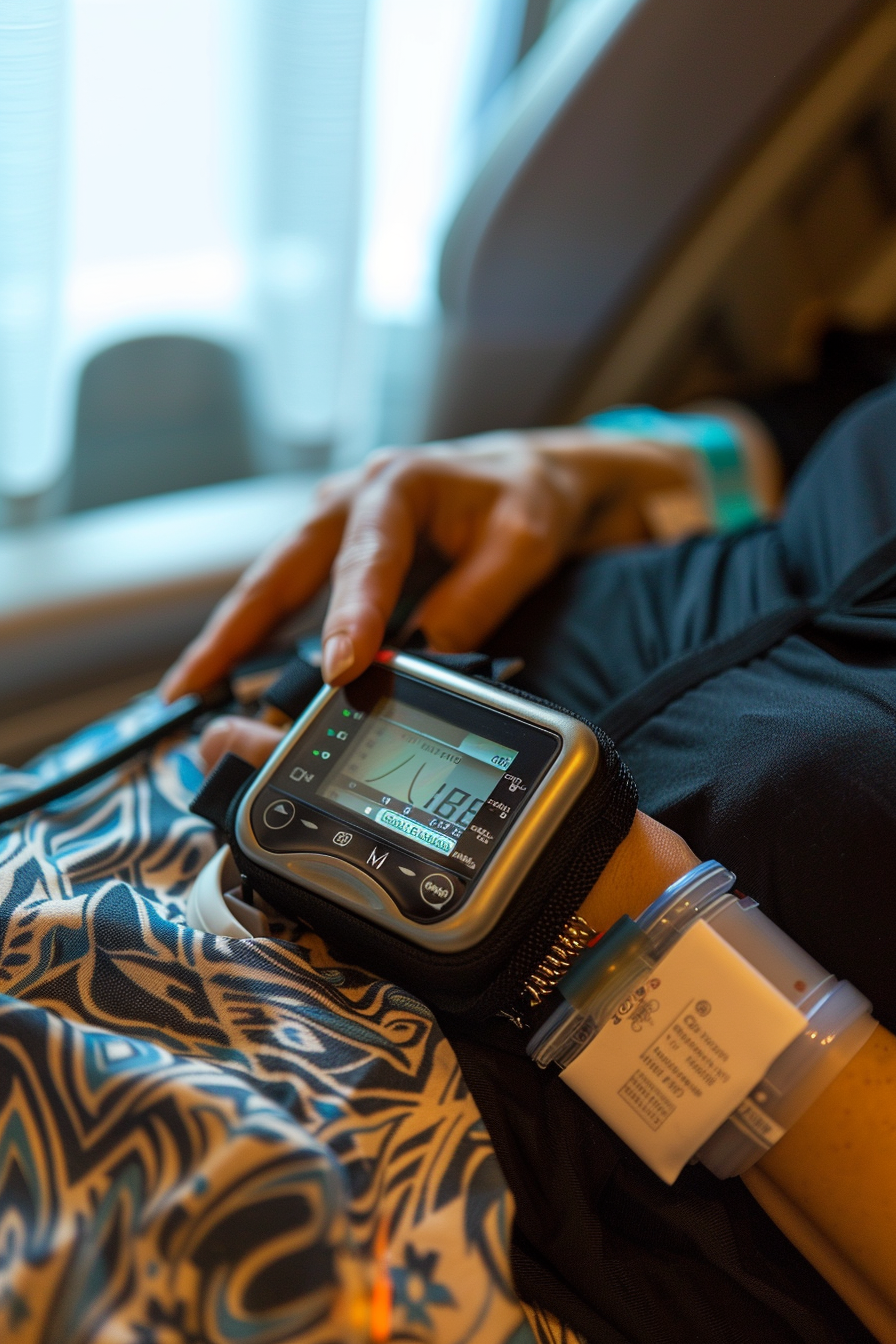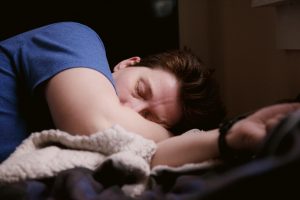In obstructive sleep apnea (OSA), intermittent narrowing or complete blockage of the upper airway can occur, preventing airflow.
Breathing can stop or become shallow, and pauses in breathing can last from a few seconds to minutes.
Furthermore, this can occur 30 times or more per hour.
Obstruction of airflow can lead to a state of intermittent hypoxemia, where oxygen levels in the blood periodically drop below normal.
This can lead to long-term cardiovascular consequences, including hypertension, stroke, cardiac arrhythmias, and other cardiovascular diseases.
Screening for and monitoring oxygen levels in patients with or suspected to have sleep apnea is therefore extremely important.
Pulse oximeters can be used as a pulse ox test for sleep apnea to tell how often an individual is in a state of hypoxemia (a condition of below normal oxygen levels in the blood).
Two key factors that are used to determine the severity of obstructive sleep apnea are oxygen desaturation levels (or, reductions in blood oxygen levels) and the apnea hypopnea index (AHI).
Pulse oximetry is used to determine oxygen desaturation levels, so let’s get into that first.
Table of Contents
What are normal oxygen levels during sleep?

When assessing oxygen desaturation during sleep, severity is determined based on a normal oxygen saturation (or, blood oxygen level) of 95-100%.
It is important to note that there are no universal standards for classifying severity of oxygen desaturation, but the following can be used as general guidelines:
- Mild oxygen desaturation: decreases to no less than 90%
- Moderate oxygen desaturation: decreases to 80-89%
- Severe oxygen desaturation: decreases to below 80%
A key validation study published in the American College of Chest Physicians (CHEST) Journal assessed normal pulse ox while sleeping in 350 healthy subjects. The following was found in the study:
- Normal overnight average oxygen saturation of 96.5% (+/- 1.5%)
- Oxygen saturation slightly decreased with increasing age (values ranged from 96.8% in an age group of 1-10 years to 95.1% in an age group of >60 years)
- Weight, gender, and ethnicity did not significantly impact normal oxygen saturation levels
- In a group of 25 patients with obstructive sleep apnea, significantly lower oxygen saturation levels were noted—a mean lowest oxygen saturation of 65.9% (+/- 22.6%) was measured versus 90.4% (+/- 3.1%) in normal subjects
What is Apnea Hypopnea Index (AHI)?
The AHI is the number of apnea events (periods of no breathing) and hypopnea events (periods of abnormally slow or shallow breathing) that occur per hour of sleep.
The American Academy of Sleep Medicine categorizes obstructive sleep apnea based on AHI as follows:
- Mild OSA: AHI of 5-15 (involuntary sleepiness occurring during activities requiring little attention; eg., reading or watching TV)
- Moderate OSA: AHI of 15-30 (involuntary sleepiness occurring during activities requiring some attention; eg., sitting in presentations or meetings)
- Severe OSA: AHI of >30 (involuntary sleepiness occurring during activities requiring more active attention; eg., driving or talking)
Another measure that is sometimes used is the Respiratory Disturbance Index (RDI).
The RDI includes both apnea and hypopnea events in addition to other, more subtle breathing irregularities. Therefore, an RDI value for an individual can be higher than the AHI.
Sleep apnea at-home testing and monitoring
There are two main approaches to overnight oxygen saturation monitoring.
Overnight sleep studies conducted by clinicians and sleep technologists use AHI, oxygen desaturation, and other parameters to screen patients for sleep apnea.
These sleep studies involve more elaborate testing that capture more thorough assessments including brain waves for sleep, muscle tone, and leg movements.
Overnight sleep studies are often preferred for patients with other comorbid conditions such as certain cardiovascular, respiratory, or neuromuscular diseases.
Wireless sleep apnea monitoring at home with a pulse oximeter or oxygen saturation monitor can be an easier, more cost-effective method that physicians may turn to for diagnosing patients with sleep apnea.
Many of these devices come as ring sensors for oxygen saturation monitoring.
At-home testing is prescribed by a physician. The results are then reviewed and analyzed by the physician and a sleep technologist in order to make a diagnosis.
Pulse oximetry can also be used to monitor ongoing treatment. For CPAP users, drops in oxygen saturation detected by pulse oximeters can let patients know that adjustments need to be made to their sleep position and/or CPAP therapy.
In fact, there are pulse oximeters with alarms that vibrate when oxygen levels drop below normal to notify users to adjust their breathing (eg, by changing sleep positions or adjusting their CPAP mask).
Looking for The Best Pulse Oximeter?
Let me tell you about the Wellue O2Ring.
One of the coolest things about it is that it doesn’t just clip onto your finger like your average oximeter.
Nope, it’s a smart ring that you wear on your finger, making it super comfortable and convenient.
You won’t even feel like you’re wearing anything special, yet it’s working its magic behind the scenes.
Check out their official product page here.
References
- MedlinePlus. National Institute of Health. Sleep Apnea. https://medlineplus.gov/sleepapnea.html. Updated 27 April 2022. Accessed June 2022.
- Dumitrache-Rujinski S, et al. The Role of Overnight Pulse-Oximetry in Recognition of Obstructive Sleep Apnea Syndrome in Morbidly Obese and Non Obese Patients. Maedia (Buchar). 2013;8(3):237-242.
- Nezter N, et al. Overnight Pulse Oximetry for Sleep-Disordered Breathing in Adults. CHEST. 2001;120:625-633.
- Division of Sleep Medicine at Harvard Medical School. Understanding the Results. http://healthysleep.med.harvard.edu/sleep-apnea/diagnosing-osa/understanding-results. Reviewed February 2011. Accessed June 2022.
- Division of Sleep Medicine at Harvard Medical School. What Happens During OSA. http://healthysleep.med.harvard.edu/sleep-apnea/what-is-osa/what-happens. Reviewed May 2011. Accessed June 2022.
- American Academy of Sleep Medicine. Obstructive Sleep Apnea. https://aasm.org/resources/factsheets/sleepapnea.pdf. Published 2008. Accessed June 2022.
- Johns Hopkins Medicine. What to Know About an At-home Sleep Test. https://www.hopkinsmedicine.org/health/wellness-and-prevention/what-to-know-about-an-at-home-sleep-test. Accessed June 2022.
- Wellue. Wellue O2 Ring
https://getwellue.com/pages/o2ring-oxygen-monitor?ref=selfpharm Accessed June 2022.



